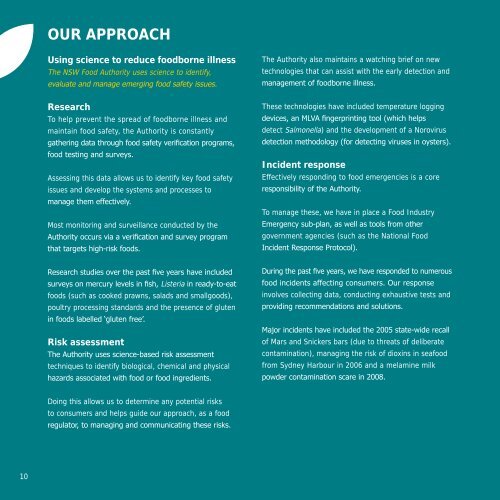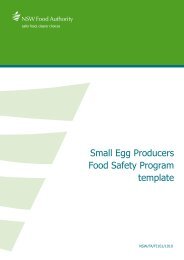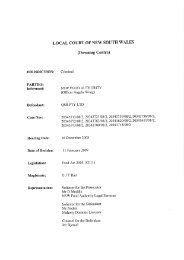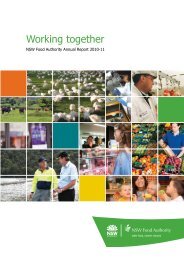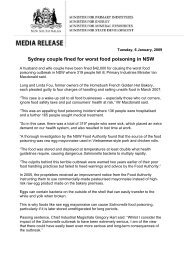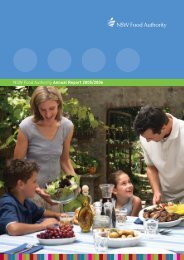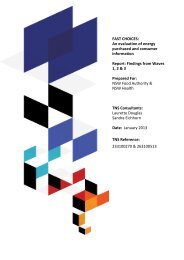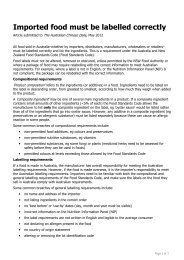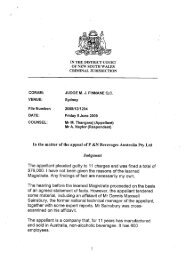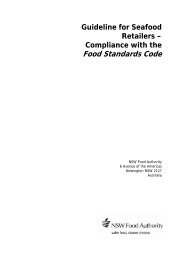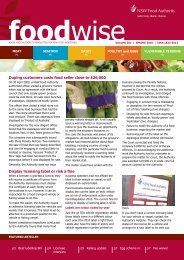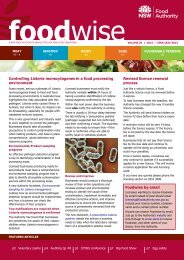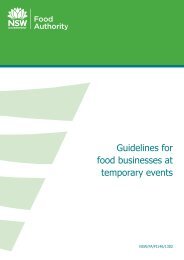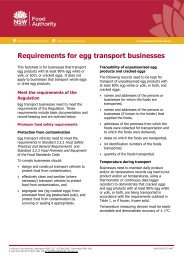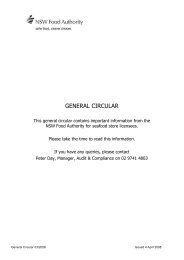NSW Food Authority 5th Anniversary Review
NSW Food Authority 5th Anniversary Review
NSW Food Authority 5th Anniversary Review
Create successful ePaper yourself
Turn your PDF publications into a flip-book with our unique Google optimized e-Paper software.
OUR APPROACH<br />
Using science to reduce foodborne illness<br />
The <strong>NSW</strong> <strong>Food</strong> <strong>Authority</strong> uses science to identify,<br />
evaluate and manage emerging food safety issues.<br />
Research<br />
To help prevent the spread of foodborne illness and<br />
maintain food safety, the <strong>Authority</strong> is constantly<br />
gathering data through food safety verification programs,<br />
food testing and surveys.<br />
Assessing this data allows us to identify key food safety<br />
issues and develop the systems and processes to<br />
manage them effectively.<br />
Most monitoring and surveillance conducted by the<br />
<strong>Authority</strong> occurs via a verification and survey program<br />
that targets high-risk foods.<br />
The <strong>Authority</strong> also maintains a watching brief on new<br />
technologies that can assist with the early detection and<br />
management of foodborne illness.<br />
These technologies have included temperature logging<br />
devices, an MLVA fingerprinting tool (which helps<br />
detect Salmonella) and the development of a Norovirus<br />
detection methodology (for detecting viruses in oysters).<br />
Incident response<br />
Effectively responding to food emergencies is a core<br />
responsibility of the <strong>Authority</strong>.<br />
To manage these, we have in place a <strong>Food</strong> Industry<br />
Emergency sub-plan, as well as tools from other<br />
government agencies (such as the National <strong>Food</strong><br />
Incident Response Protocol).<br />
Research studies over the past five years have included<br />
surveys on mercury levels in fish, Listeria in ready-to-eat<br />
foods (such as cooked prawns, salads and smallgoods),<br />
poultry processing standards and the presence of gluten<br />
in foods labelled ‘gluten free’.<br />
Risk assessment<br />
The <strong>Authority</strong> uses science-based risk assessment<br />
techniques to identify biological, chemical and physical<br />
hazards associated with food or food ingredients.<br />
During the past five years, we have responded to numerous<br />
food incidents affecting consumers. Our response<br />
involves collecting data, conducting exhaustive tests and<br />
providing recommendations and solutions.<br />
Major incidents have included the 2005 state-wide recall<br />
of Mars and Snickers bars (due to threats of deliberate<br />
contamination), managing the risk of dioxins in seafood<br />
from Sydney Harbour in 2006 and a melamine milk<br />
powder contamination scare in 2008.<br />
Doing this allows us to determine any potential risks<br />
to consumers and helps guide our approach, as a food<br />
regulator, to managing and communicating these risks.<br />
10


